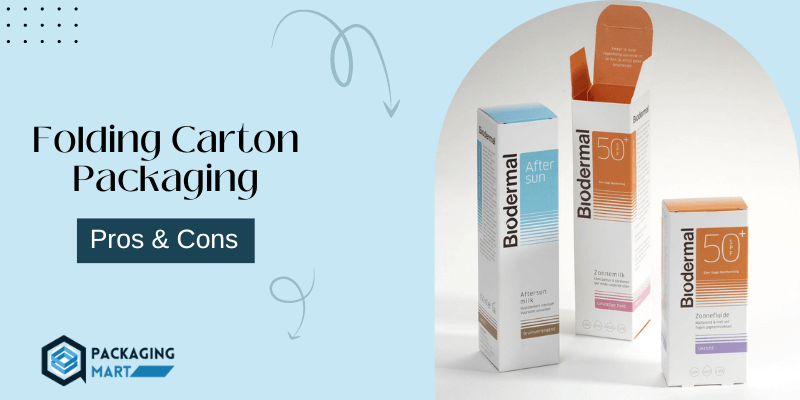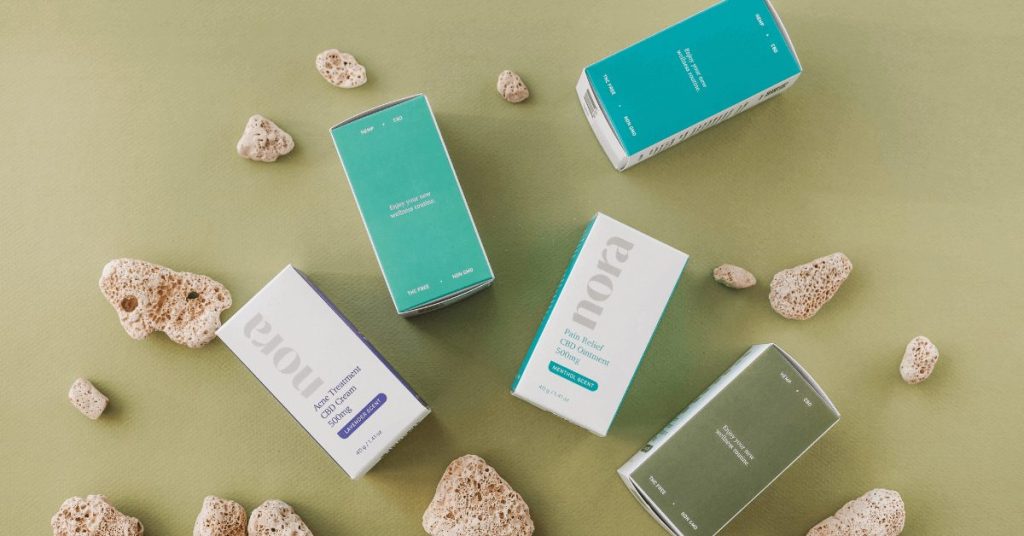Carton packaging has become a common packaging choice for businesses in many industries, from food and beverage to medical products. But what is it exactly and why should you consider using folding carton packaging?
In this blog post, we’ll explain the basics of carton packaging so that you can make an informed decision. We’ll also explore folding carton packaging, its benefits and what makes it different from other types of packaging materials. This post will provide all the information you need to choose the right solution for your business needs. Stay tuned!
Folding Carton Packaging
Carton packaging is a type of packaging made from paperboard or corrugated fiberboard, which is then folded into a box shape. Carton packaging provides superior protection for products, resulting in less damage during transport and storage.
This type of packaging also has additional advantages such as being lightweight, easy to assemble and relatively cheap compared to other types of packaging. It is also highly customizable, allowing for graphics and branding to be added easily.
Benefits of Folding Cartons Packaging
Folding carton packaging is a type of lightweight packaging that utilizes folded paperboard to create boxes, containers and other types of enclosures. Folding cartons are often used for consumer products such as food items, pharmaceuticals, cosmetics and small electronics.
Folding carton packaging offers many advantages for businesses and consumers.
For businesses
- Folding carton packaging is cost-effective and lightweight, making it easier to ship and store products.
- It also provides a sturdy structure for the product being the product being shipped, helping to protect it during transport.
- Additionally, it offers a professional display image in retail outlets, providing a polished look for products on display.
- Lastly, folding cartons can be easily customized with text and other features to create attractive packaging.
For consumers
- Folding carton packaging is easy to open and provides adequate protection for the product.
- It also allows consumers to easily identify the contents of the package, helping them make informed purchasing decisions.
- Additionally, it provides a more eco-friendly option for those looking to reduce their carbon footprint with less waste from packaging materials.
Drawbacks Of Using Folding Carton Packaging
Yes, folding carton packaging can come with some drawbacks.
- Folding cartons are prone to damage due to their fragile nature and can become easily dented or ripped when mishandled.
- Folding cartons are typically not as strong as plastic or metal materials used for other types of packaging.
- Assembling them is a time-consuming process that can be tedious and labor-intensive.
- Folding cartons can also take up a lot of storage space, as they need to be stored flat until ready for use.
- Furthermore, their construction may not provide enough protection from certain types of damage or contamination, such as water.
- Finally, they are usually made of paper or cardboard, which means that they are not always suitable for packing heavier items.
Overall, folding cartons can be a great choice for packaging certain products, but there are some drawbacks to consider before investing in them.
How does folding carton packaging work?
Folding carton packaging is a type of cardboard container that is usually printed with artwork or text while in its flat state, yet can be quickly and easily assembled into three-dimensional shapes.
- This type of packaging material is lightweight yet strong enough to protect the product inside due to its combination of corrugated paperboard and solid fiberboard components.
- The unique material properties of folding carton packaging also make it highly customizable.
- It can be printed with a wide range of colors and patterns, as well as special finishes such as glossy or matte lamination, metallic foils, embossing and more.
- Additionally, folding carton packaging is relatively inexpensive to produce compared to other types of packaging materials.
- Finally, most folding carton packaging is compostable, making it a popular choice for eco-friendly packaging solutions.
With its ability to be customized, printed with artwork and even composted, folding carton packaging is a great choice for many businesses. Thanks to its versatility.
What industries typically use folding carton packaging?
Folding carton packaging is commonly used in many industries, including
- Food and beverage: Folding cartons are used to package both dry and wet food products such as cereals, crackers, snacks, drinks, soups and sauces.
- Pharmaceutical: Folding box packaging is widely used in the pharmaceutical industry to safely and securely deliver medications.
- Household goods: Folding cartons are often used for packaging household goods, such as cosmetics, cleaning supplies and other home products.
- Electronics: Folding cartons are used to package electronics and small appliances. This type of packaging ensures that these items remain safe during transportation and storage.
- Retail items: Folding cartons are an ideal packaging solution for retail items such as clothing, toys and books. They provide a visually appealing packaging solution that helps to attract customers and increase sales.
- Other industries: Folding carton packaging is also used in other industries, including automotive, industrial, cosmetics and health & beauty products.
No matter the product or industry, folding carton packaging is an effective and economical way to package and transport goods.
How can folding carton packaging be customized to fit the needs of businesses and consumers alike?
- One way to customize folding carton packaging is by using printing techniques such as lithography or flexography. These techniques allow for custom designs to be printed on the material, making it possible for businesses to create and promote a unique brand identity.
- Companies can also add special finishes like spot UV or foil stamping that make the product stand out from the competition.
- Another way to customize folding carton packaging is by selecting from a wide range of sizes and shapes that fit the product they’re protecting.
- Companies can also add additional features such as special closures, tabs and handles that make it easier for consumers to open and close the package.
- Finally, businesses can opt for additional services such as semi-automated assembly or custom die-cuts that are tailored to their specific needs. These services provide greater convenience for companies and help ensure a smooth distribution process.
FAQs – Folding Carton Packaging
Who invented the folding carton?
The folding carton was invented by Robert Gair in 1890. He developed a way to mass-produce paperboard boxes, which revolutionized the packaging industry and allowed companies to package their products efficiently and cost-effectively. Today, folding cartons are used for everything from food packaging to medical supplies.
How are folding cartons measured?
Folding cartons are measured in a variety of ways depending on the application. Generally, folding cartons are measured by length, width, height and depth. Length is used to measure the longest side or edge of the carton. Width measures the shorter side or edge that is perpendicular to the length measurement.
Height refers to the vertical measurement of the box and depth is used to measure the internal distance between the lid and bottom. All measurements should be taken from outside edges or markings on the carton, with any printing or additional decoration accounted for in the size. It is important to measure accurately as incorrect sizes may cause difficulty when manufacturing and filling the cartons.
How many layers are in a carton?
The number of layers in a carton can vary depending on the application. Generally, folding cartons are constructed from one to five layers of material, with three or four being the most common.
The additional layers allow for more strength and stability within the carton design. A single layer may be used for lightweight applications, whereas a four or five-layer carton will provide extra strength and protection for heavier items.
Wrap over
Carton packaging is one of the most versatile types of packaging. It can be used for a wide variety of products and it’s easy to customize to fit your needs. Its flexibility in design allows a great degree of product protection, branding opportunities and sustainability. If you’re looking for a way to improve your product’s packaging, folding carton packaging is worth considering.
Hopefully, this information is helpful in understanding the benefits of folding carton packaging and how it can be customized to meet your specific needs. With the right design and materials, folding carton packaging can make a big impact on your business’s success.


